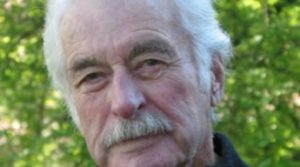EUROPEAN FAMILY THERAPY ASSOCIATION
CONNECTING FAMILY THERAPISTS AND TRAINERS
Gerald Patterson
(1926-2016) Award-winning scientist, doctorate from the University of Minnesota

Theo Compernolle: The unsung hero of family therapy, also has his spot on my guru list. While he may not be a typical figure in the field, his groundbreaking work in using a family-based approach for the very difficult category of delinquent children speaks volumes. Jerry and his team actually went to the homes of these troubled kids to work their therapeutic magic. It’s worth mentioning that Sal Minuchin also dipped his toes into the family approach while wrangling delinquent children at the Wiltwyck School. Without Jerrie’s influence, I would never have discovered behavioral therapy in time to return to psychiatry after completing my neurology training.
Patterson’s groundbreaking work with these challenging adolescents and their families revealed the power of scientifically informed therapeutic techniques. Moreover, he wrote concise, practical and insightful books that educators and parents could actually understand. His example inspired me to become a “translator” of scientific knowledge, someone who bridges the gap between experts and the general public. Without Patterson, I might not have become a writer of best-selling books.
Gerald Patterson was undoubtedly the most kind and gentle giant of them all. He was a gem. Let me share two examples.
As our time in Philadelphia was coming to an end, my wife and I decided to embark on a six-month tour of the USA with our two little munchkins in a rusty VW bus. We planned to mix business (conducting workshops) with pleasure (exploring the country). Now, as luck would have it, we were going to pass through Eugene in Oregon. I reached out to Patterson and asked if I could spend some time with him and his team to learn firsthand. And you know what he said? He warmly welcomed me and even added, “We will certainly learn a lot from you.” Unbelievable. But wait, there’s more!
When I finally set foot in Jerries’ center (1978), I was greeted by an exceptional team unlike any I had encountered before. What blew me away was their commitment to practicing what Patterson preached. They didn’t just implement his “non-coercion” ideas in therapy; they embodied them in their daily interactions. Picture this: if someone felt coerced by a colleague, all they had to do was say “Zapp” without further explanation. That simple word prompted the other person to reframe their statement in a non-coercive way. It worked like magic, creating a space where everyone felt safe, heard and valued.



